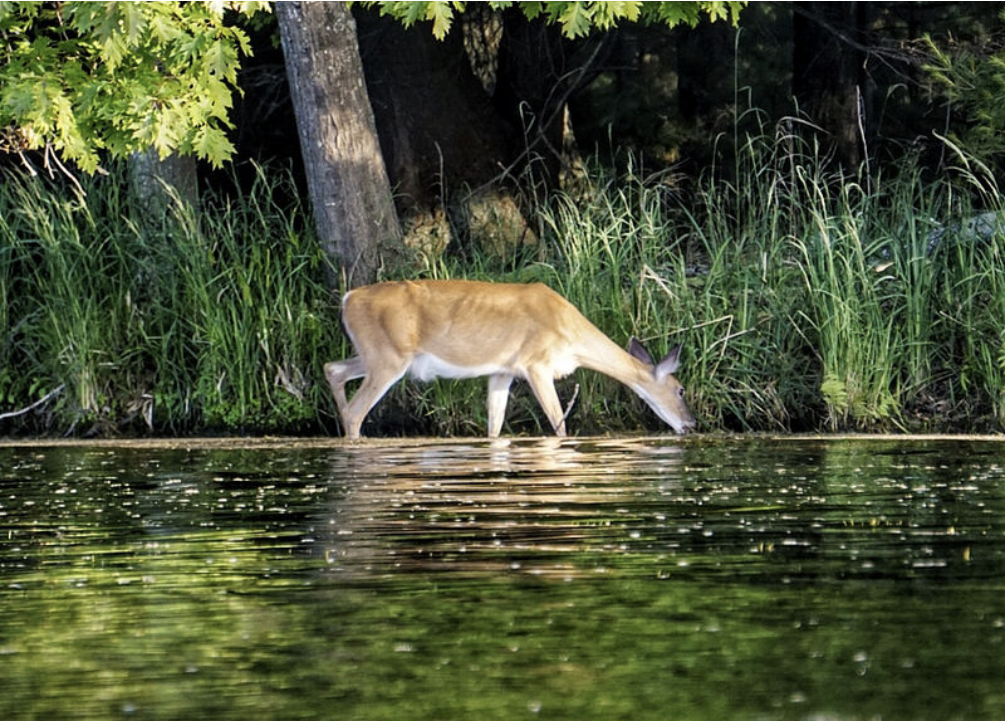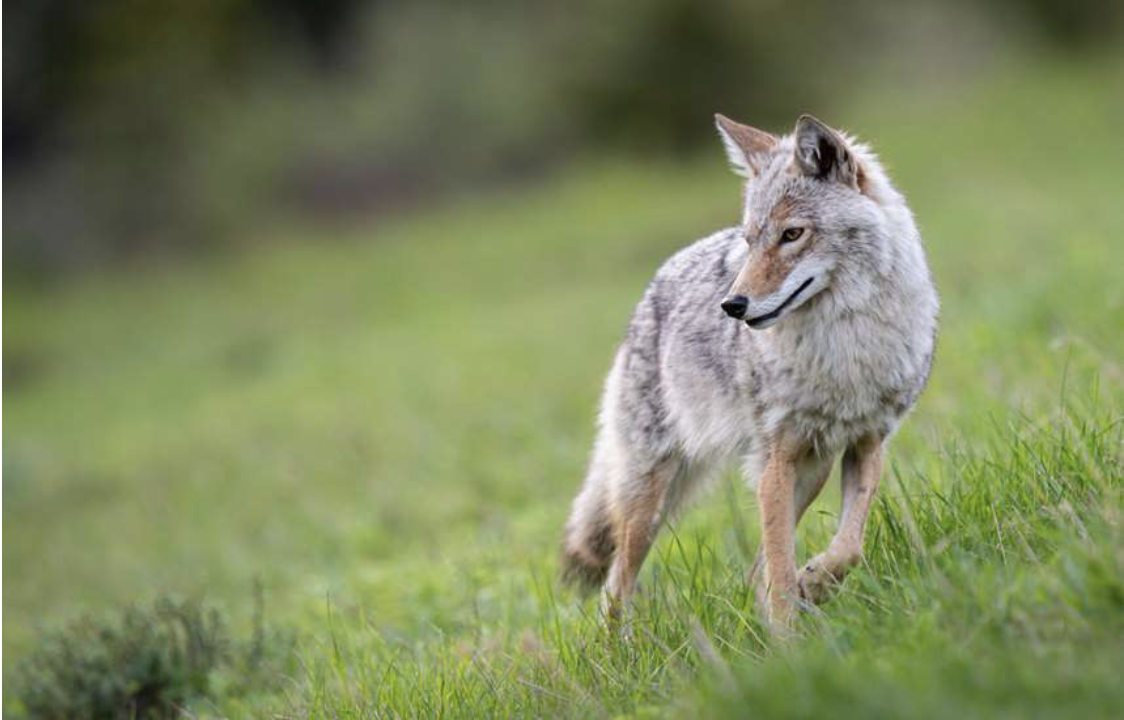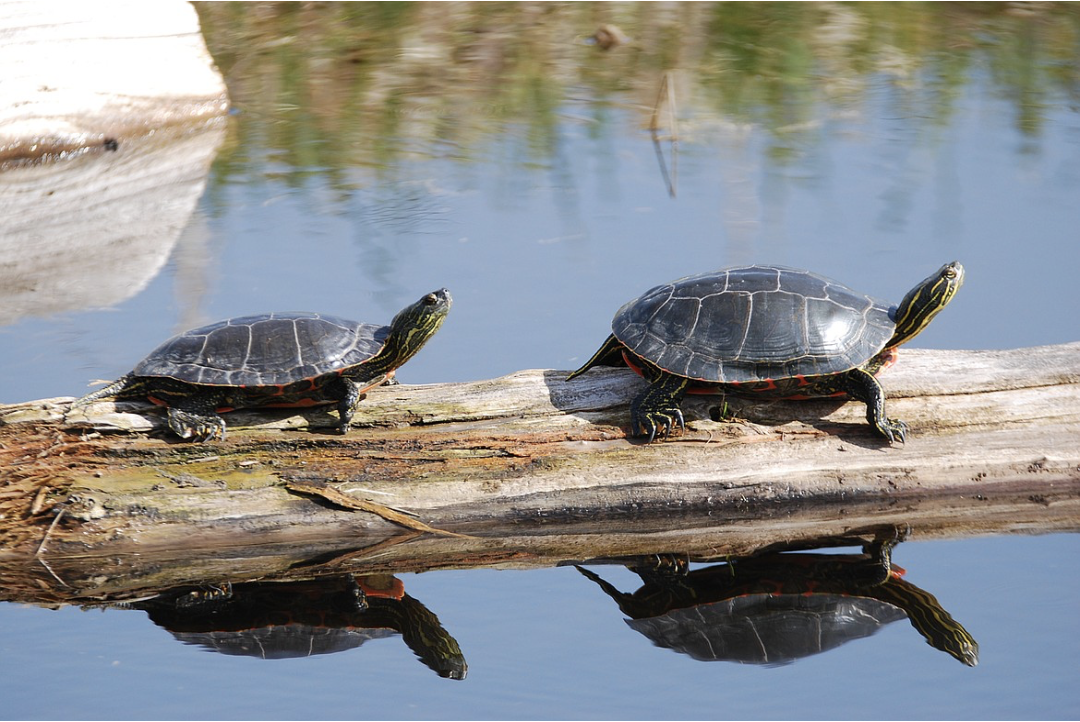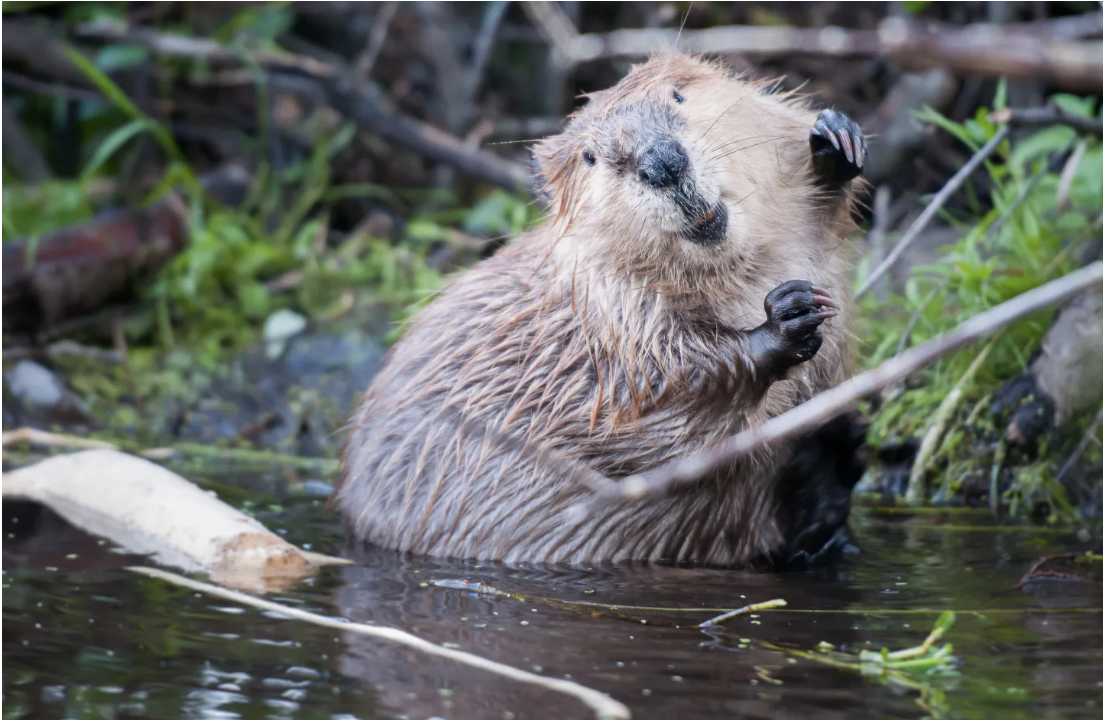The Dog Days of Summer
/The sweltering days of summer are upon us, which means more time spent at the beaches of the Indiana Dunes. For centuries humans have adapted to extreme heat, and we’ve developed many ways to keep cool. Whether it’s jumping into the water, sitting in front of a fan, air conditioning, staying hydrated, or wearing light clothing, we’ve learned to manage high temperatures. We also have physiological mechanisms to thermoregulate which is when our core temperature rises and the brain sends signals to cool us down. We sweat to release heat from the surface of our skin, and the cooler blood then circulates throughout the body. While we know how humans cool down, have you wondered how the animals in Indiana Dunes National Park beat the heat? Since humans are mammals a lot of these mechanisms can be similar! We are not so different after all.
White-Tailed Deer
The white-tailed deer cools down in two ways through their mouth and ears. During summer, their ears are mostly hairless, allowing heat to escape more efficiently. They also pant - just like dogs - to lower their body temperature. On especially hot days, deer seek shelter near water where it’s naturally cooler.
Coyote
Similarly to the white-tailed deer, coyotes cool down by panting. They rapidly inhale and exhale, circulating air over their moist tongues, which helps evaporate heat from their bodies. To avoid the scorching sun, coyotes often rest in shaded areas or near water and become more active during the cool night.
Amphibians
Amphibians are ectothermic, meaning they are “cold-blooded” or that they rely on external sources to regulate their body temperature. Therefore, when there are severe heat waves, amphibians need to cool down to thrive. They do this through a process called aestivation which is a state of dormancy in which an animal reduces its activity and metabolic rate. This is similar to a process known as hibernation, but it takes place in the summer rather than the winter.
Birds
Birds have a few unique ways of cooling down. One method is gular fluttering - a combination of open-mouth breathing and rapid vibration of the moist throat membranes that allow for evaporation. Birds may also take quick dips in water or bathe to lower their body temperature. Afterward, they often fluff their features and spread their wings to catch any breeze.
Beaver
Beavers play a special role in the Indiana Dunes ecosystem, especially during summer. Their dams are engineering marvels that reshape the flow of water - creating ponds, widening rivers, and forming wetlands. These dams create deepened waters that tend to stay cooler. This provides relief for many species that rely on these habitats to escape the heat. When standing near a beaver meadow, the temperature drops compared to other parts of the ecosystem.
As you enjoy those slow, sunny days at the Indiana Dunes, take a moment to appreciate how the environment - and the animals within it - adapt to the heat, just like we do. It’s another reminder of how interconnected we are with the world around us. The more we learn about these remarkable species, the more we can understand and protect the ecosystems we share.
Sources:
Too Hot to Handle: The Human Health Consequences of Extreme Heat
Alsheimer: Staying Cool – Close-Up of a Whitetail's Radiator
How do birds keep cool in the summer? | U.S. Fish & Wildlife Service
Ask the Naturalist | Water Creatures in Summer - Bay Nature
Ixchel Barraza Zapata is a 2nd Year Environmental Education Fellow at Dunes Learning Center












